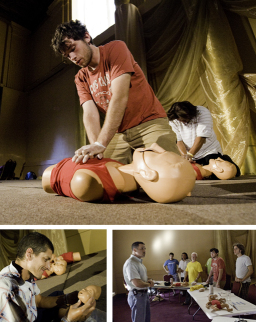
Florida's # 1 CPR, AED BLS and First Aid Certification Training Center!
-
Home
Services
Clients
Contact
Register

Everyone should learn how to perform cpr and what to do if someone is choking or needs a defibrillator!
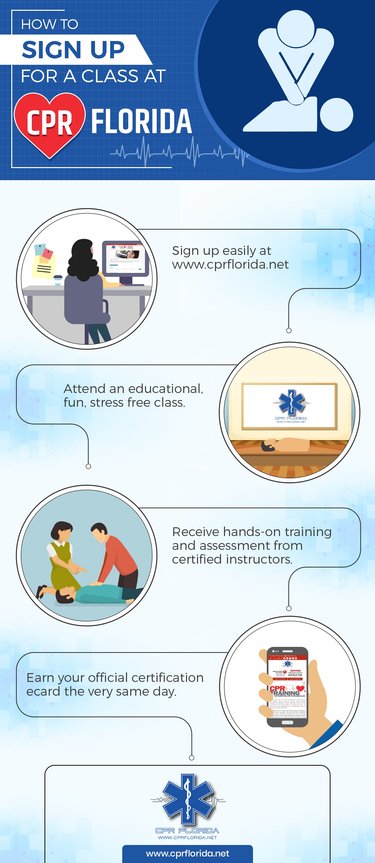
CPR Classes should be compulsory for every parent as well as those working with children and young people. In fact they really should teach cardiac pulmonary resuscitation and other first aid skills at school so that everyone has access to learning this potentially lifesaving skill. The Red Cross or the American Heart Association can often help schools and colleges run these programs. Why not learn child/infant CPR today?
It is bad enough to witness a fatality but imagine if you found out later that the person, your child perhaps or another loved one, could have lived if you or someone else at the scene had performed pediatric CPR. Our emergency services are terrific but they cannot always be where they are needed and while you are waiting for them to arrive the person could die. Studies have shown that starting CPR and using an AED can save lives. Once the heart stops beating you do not have much time before it will not be possible to restart it.
At CPR training, which can take place locally or you can take a class online, you will learn three different but related CPR techniques being those for children, for infants and for adults. The process to save a child is a slightly modified version of that applied to an adult. For an infant it is quite different. If you ever have to perform cardiac pulmonary resuscitation on an infant and you are on your own you should do one minute of CPR prior to calling 911 for an ambulance and then continue doing chest compressions and giving rescue breaths until the ambulance arrives.
Who offers CPR training?
When you start looking for a place to learn the process, you need to check that your instructor is a certified first aid and CPR instructor. Ideally the course should be accredited by either the Red Cross or the American Heart Association. The American Red Cross provide train the trainer courses if this is something you would be interested in doing after you have yourself learnt how to do CPR. If you cannot find local classes you can train via online training provided by the American Heart Association or the Red Cross.
If you hate training using a computer, you could always contact your nearest hospital or medical center and ask if they would organize some CPR training if you were to get a group together. You could then canvas for other interested parties at your kids school, coffee mornings or even put a notice up in your local store.
When you do take the class, the first thing you will be taught is to remember your role is only to try to keep someone alive until the emergency services arrive. You are not going to learn how to be a replacement for a doctor or other forms of medical attention. It is vital that you or someone else call 911. As you will learn, administering CPR can save someone’s life in the short term but they will also require urgent medical attention to keep them alive.
Remember you only start cardiac pulmonary resuscitation if the heart actually stops and the medics are going to want to know what caused this to happen to prevent it reoccurring at a later date. It doesn’t matter if you live in California or Texas, CPR training is not hard to find once you start looking.
Learn how to use an AED as well as perform CPR
More CPR classes are also offering lessons in the use of an AED (automatic external defibrillator). Some people will carry these devices around in their cars or have them in their homes. They are also found in public buildings including offices, train stations etc. Studies show that while CPR is a lifesaver, when combined with AED the results are even better. You should never attempt to use a defibrillator until you have been properly trained.
If you have passed the training, you will have been taught that in most cases where an AED is required, CPR will already have commenced and should continue if possible while the AED is being prepared for use. You would then allow the AED to prompt what should happen next. If you have to give a shock to the patient always make sure everyone else is standing clear as you don’t want to end up with more than one casualty. You would never use an AED on a child under one years of age. In addition to covering CPR and AED, some courses also cover how to deal with blood borne pathogens and other first aid issues.
Do you have to have any previous medical certification?
CPR classes do not require you to have any formal qualifications or existing medical knowledge. Some people don’t attend out of fear they will be ridiculed or will make a fool of themselves. The instructor will have seen it all before and remember you are learning how to potentially save someone’s life. There is nothing to ridicule about that. On completion of your course you should receive a laminated pack of CPR/AED cards to help keep your knowledge of first aid fresh and up to date.
CPR recertification keeps you up to date!
You will have to recertify, usually every two years, if you want to retain your qualification. The thinking and practice behind the best way to administer the technique is constantly being investigated and improved upon. While the basics at CPR classes will remain the same, you may find out new knowledge when you go for CPR recertification that could lead to you saving someone else’s life.
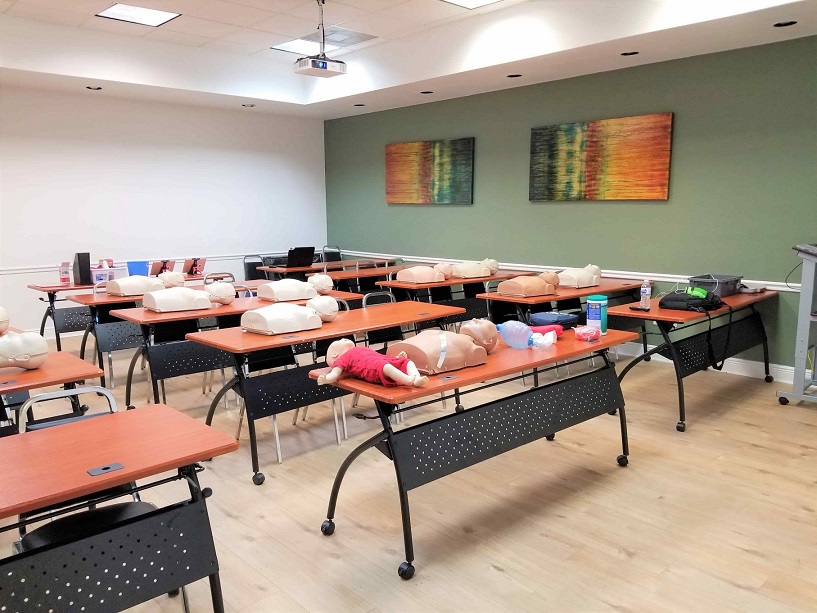
Contact us:
United States Phone: 978-KNOW-CPR
Main Phone: 888-388-9250
Visit our Main Websites to schedule a class near you:
www.cprflorida.net and www.cprflorida.co
 |
| 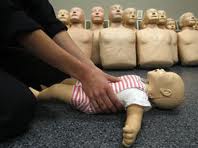 |
| 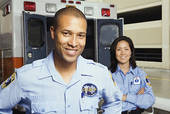 |
| 